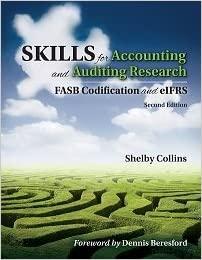Suppose there are only two firms in a region emitting a particular pollutant, E. The firms have the following marginal abatement cost curves: MAC1 = 12 - 0.5E1 and MAC2=12-1/3E2, where E1 and E2 are emissions from firm 1 and firm 2 respectively.

a Re-draw each firm's MAC curve and the aggregate marginal abatement cost curve below, as defined in question 1. Label the uncontrolled level of emissions for each firm and for society. O pt.) Qemissions For the questions that follow, suppose the EPA decides to implement a cap-and-trade program instead of a tax. It freely allocates permits to each firm, equal to the firm's uncontrolled emissions minus 6 units; therefore, firm 1 receives permits for 18 units of pollution and firm 2 receives permits for 30 units of pollution. (Hint: this is an identical outcome to the performance standard defined in part 1c, if trade is not allowed.) Assume trade is allowed and permits are perfectly divisible, meaning each firm can sell permits for fractions of units of pollution (e.g. each permit authorizes 1 ton of CO2 pollution, and you can sell the permit for any fraction of a ton of CO2 pollution). What is the equilibrium permit price and final allocation of pollution across firms if trade is allowed? Show this outcome on the graph. (Hint: you can just explain your answer based on previous work; you don't need to recalculate anything.) (1 pt.) b. The equilibrium permit price is $_ Firm 1's allocation of emissions: units. Firm 2's allocation of emissions: units. c. Which firm will buy permits and which firm will sell permits? (1 pt.) Firm 1 will BUY/SELL (circle one) permits for units of pollution Firm 2 will BUY/SELL (circle one) permits for units of pollution d. What are the net benefits to trade for each firm (1.e. how much better off is each firm if they are allowed to trade permits, compared to not being allowed to trade as in a performance standard)? Calculate and graph your answer. (2 pts.) Net benefits of trade to Firm 1 are $ Net benefits of trade to Firm 2 are $ 4. Now let's introduce some uncertainty. Suppose true MAC = 12 - 1/5Egg and true MPD = 1/7Ey; the government does not know either of these functions, but it has a decent guess. Should it implement a tax or cap-and-trade policy? (Hint: you can answer this without any calculations; in the next PS we'll do some more detailed calculations.) (1 pt.) The government should implement a TAX/CAP-AND-TRADE (circle one) because a Re-draw each firm's MAC curve and the aggregate marginal abatement cost curve below, as defined in question 1. Label the uncontrolled level of emissions for each firm and for society. O pt.) Qemissions For the questions that follow, suppose the EPA decides to implement a cap-and-trade program instead of a tax. It freely allocates permits to each firm, equal to the firm's uncontrolled emissions minus 6 units; therefore, firm 1 receives permits for 18 units of pollution and firm 2 receives permits for 30 units of pollution. (Hint: this is an identical outcome to the performance standard defined in part 1c, if trade is not allowed.) Assume trade is allowed and permits are perfectly divisible, meaning each firm can sell permits for fractions of units of pollution (e.g. each permit authorizes 1 ton of CO2 pollution, and you can sell the permit for any fraction of a ton of CO2 pollution). What is the equilibrium permit price and final allocation of pollution across firms if trade is allowed? Show this outcome on the graph. (Hint: you can just explain your answer based on previous work; you don't need to recalculate anything.) (1 pt.) b. The equilibrium permit price is $_ Firm 1's allocation of emissions: units. Firm 2's allocation of emissions: units. c. Which firm will buy permits and which firm will sell permits? (1 pt.) Firm 1 will BUY/SELL (circle one) permits for units of pollution Firm 2 will BUY/SELL (circle one) permits for units of pollution d. What are the net benefits to trade for each firm (1.e. how much better off is each firm if they are allowed to trade permits, compared to not being allowed to trade as in a performance standard)? Calculate and graph your answer. (2 pts.) Net benefits of trade to Firm 1 are $ Net benefits of trade to Firm 2 are $ 4. Now let's introduce some uncertainty. Suppose true MAC = 12 - 1/5Egg and true MPD = 1/7Ey; the government does not know either of these functions, but it has a decent guess. Should it implement a tax or cap-and-trade policy? (Hint: you can answer this without any calculations; in the next PS we'll do some more detailed calculations.) (1 pt.) The government should implement a TAX/CAP-AND-TRADE (circle one) because







